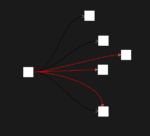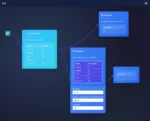
by tyler garrett | May 15, 2025 | Data Processing
Imagine moving critical data seamlessly, without redundant copying or the overhead of repeated memory manipulation—sounds revolutionary, doesn’t it? In today’s fast-paced, data-intensive world, businesses and organizations must handle complex workflows with precision and efficiency. Enter zero-copy data movement, a technical strategy reshaping how organizations streamline data processing stages. By optimizing data flow, zero-copy techniques provide powerful performance improvements, minimize latency, and significantly reduce resource consumption. This is more than just efficiency—it’s a strategic pathway towards enhancing user experiences, enabling advanced analytics, and freeing up vital resources for innovation-driven growth.
Understanding Zero-Copy Data Movement
At its core, zero-copy data movement eliminates unnecessary data duplication as information progresses through different stages of a data processing pipeline. Traditionally, as data travels from initial ingestion to final processing, it undergoes multiple read-write operations, each operation involving costly memory copy actions. With zero-copy frameworks, however, the data is written once and read directly by subsequent processing stages, dramatically reducing overhead and accelerating throughput.
This underlying efficiency proves crucial in environments where low latency, high throughput, and robust performance are mandatory. Leveraging zero-copy data transfers helps highlight inefficiencies previously hidden within traditional ETL (Extract, Transform, Load) approaches. For example, moving to modern ELT architectures, which inherently embrace zero-copy principles, becomes a logical step forward, demonstrated well by understanding why why ELT makes more sense than ETL in 2025. Organizations can more precisely allocate computing resources and remove bottlenecks that might have hindered their scalability and agility.
For decision-makers interested in using advanced data analytics, embracing zero-copy solutions facilitates enhancing speed-to-insights while keeping operational complexity manageable. Additionally, the reduced strain on system resources not only brings direct cost savings but also indirectly fuels innovation by freeing key computational overhead that can now be redirected to deeper analytical tasks or creative use cases.
The Benefits of a Zero-Copy Strategy
A zero-copy strategy provides several strategic advantages. Firstly, it dramatically improves performance. Traditional data movement methods introduce latency due to frequent memory copying and buffer management tasks. The removal of redundant I/O operations significantly cuts down overall processing time, accelerating data delivery to downstream analytics and visualization layers.
Secondly, zero-copy reduces resource utilization dramatically. With fewer copies occurring within memory or across network pathways, organizations achieve substantial reductions in CPU overhead and power consumption. This lowered infrastructure load directly translates to potential cost savings in terms of hardware, electricity, and cooling, which can quickly add up across large-scale data operations.
Moreover, improved system reliability and scalability come naturally as fewer intermediate steps mean there are fewer failure points. By adopting zero-copy methodologies, organizations simplify data flow complexity and consequently, gain easier infrastructure maintenance and enhanced operational dependability. If you’re exploring enhancements to data visibility and quality management, adopting zero-copy aligns perfectly with concurrent strategic initiatives like implementing a data observability strategy.
Zero-Copy in Microservices and Modern Data Architectures
Zero-copy architecture seamlessly integrates into modern microservices and distributed systems. Microservices architecture involves breaking down applications into smaller, independent modules—each with clearly defined responsibilities and communication with other modules over efficient data streams. Zero-copy complements this design approach by reducing friction and overhead between different microservice components, ensuring that their interactions remain streamlined and ultra-efficient. To fully understand this integration, reviewing common data architecture patterns for microservices can reveal optimal designs to incorporate zero-copy techniques effectively.
Additionally, multi-modal data fusion, the practice of synthesizing varied data inputs into coherent outputs, inherently benefits from zero-copy implementation. When fusing complex, heterogeneous data types, minimizing copying helps avoid latency delays that hinder real-time fusion accuracy. Strategic insights can often be derived faster and more accurately when organizations leverage efficient zero-copy techniques within their multi-modal data fusion strategies, thus empowering timely, precise decision-making capabilities.
Organizations actively investing in advanced analytics infrastructure should consider consulting specialists experienced in data visualization services. Experts can help leverage zero-copy principles effectively across modern analytics and visualization processes, ensuring your teams achieve maximum performance from sophisticated data pipelines.
Zero-Copy Networking and its Role in Data-Intensive Operations
Networks often represent significant bottlenecks in complex data workflows, reinforcing the strategic value of zero-copy networking techniques. Traditional approaches involve repeatedly copying data payloads from the operating system to networking buffers, then again from buffers within receiving apparatuses. This process not only imposes latency but also consumes considerable available memory resources.
Conversely, zero-copy networking methods reduce this complexity by directly sending data from application memory areas to the network interface, bypassing intermediate buffers. Technologies such as Remote Direct Memory Access (RDMA) and TCP/IP offloading utilize zero-copy concepts to improve bandwidth and lower network latency. Organizations with large datasets or high-velocity scenarios, such as real-time analytics, financial data exchange, and high-frequency trading environments, find zero-copy networks critical for their operational effectiveness.
When aiming for exceptional processing speed, businesses must also remain vigilant about their data security. A comprehensive understanding of the importance of data privacy in fintech sectors reminds leaders that adopting zero-copy is not only about performance—it’s also about preserving secure, frictionless data flows by minimizing data exposure opportunities.
Implementing and Overcoming Challenges with Zero-Copy Strategies
Adopting zero-copy methodologies, while advantageous, requires alignment across technical teams and proactively overcoming implementation hurdles. Engineers must ensure existing applications and legacy systems can support zero-copy interactions without significant refactoring. Migration from traditional approaches requires changing paradigms within infrastructure teams, promoting awareness, and training technical staff on new zero-copy compatible APIs and frameworks.
One common challenge to address is spotting data silos. Implementing advanced data movement strategies relies on full visibility and centralization of data assets—not an easy task when these resources are isolated within silos across teams and departments. To effectively address such barriers, leadership teams would benefit significantly by reading about identifying and mitigating data silos. Deconstructing informational silos helps streamline data interactions across widely different parts of a technology stack, easing zero-copy adoption and driving cohesive improvements in analytics workflows.
Another implementation best practice involves ensuring compatibility with modern cloud architectures. For instance, leveraging zero-copy techniques proves incredibly valuable when migrating complex analytics environments or data-intensive payloads into advanced cloud services such as sending LinkedIn data to BigQuery using node.js, drastically simplifying many integration hurdles traditionally associated with massive cloud datasets.
A Strategic Vision For the Zero-Copy Future
Businesses and organizations that embrace zero-copy data movement stand poised to dramatically boost their analytical throughput, simplify infrastructure operations, and unleash greater innovation potential. Progressive enterprises are increasingly incorporating zero-copy approaches into their technical roadmaps, mindful of the compelling blend of operational simplicity, enhanced speed, and reduced costs.
As technical strategists focused on data, analytics, and innovative growth, we recommend business decision-makers begin exploring ways in which zero-copy solutions can reinvigorate their technology stacks, simplify modernization strategies, and transform their data analytics landscapes. Engaging with experts in visualization consulting and advanced analytics will help leaders identify critical initial projects, pinpoint zero-copy implementation opportunities, and holistically evolve their organizational data strategies toward greater performance, agility, and business insight.
It’s clear: In today’s data-centric market, zero-copy data movement presents more than a simple optimization. It’s a strategic shift with powerful implications for those ready to embrace true agility, speed, and efficiency in the way they unlock insights from their increasingly intricate data ecosystems.

by tyler garrett | May 14, 2025 | Data Processing
Understanding and mastering the intricacies of data pipelines is now a vital cornerstone for any organization striving to maximize its analytics and innovation journey. Modern data pipelines, however, have grown increasingly complex, forming large dependency networks that can quickly become difficult to track, manage, or optimize without strategic visualizations. The key to effective pipeline management lies deeply rooted in clear, coherent visualization techniques—allowing stakeholders and engineers alike to intuitively grasp complex interactions and dependencies, enhance productivity, and swiftly pinpoint bottlenecks or inefficiencies. In this comprehensive guide, we’ll explore practical visualization strategies decision-makers and data architects can leverage to illuminate their complex data pipelines clearly and efficiently.
The Importance of Visualization in Complex Data Pipelines
As businesses continue to integrate advanced analytics, artificial intelligence, and machine learning into their daily operations, the complexity and interconnectedness of their data ecosystems scale exponentially. A well-structured visual representation of your data pipeline’s dependency graph plays a vital role in clearly communicating system architecture, troubleshooting problems efficiently, and proactively maintaining data trustworthiness and accuracy. By utilizing effective visualization techniques, your technical team is provided with the clarity and transparency needed to enable rapid decision-making as well as pinpoint data anomalies or opportunities for performance optimization.
Moreover, visualization acts as a common, universally understood form of communication among technical developers, business analysts, and stakeholders—improving collaboration and facilitating constructive, productive dialogues about complex data flows and dependencies. Without well-designed visual aids, it is challenging and time-consuming to establish alignment, iron out misunderstandings, and transform data strategies into actions capable of driving real revenue growth. Businesses mastering data pipeline visuals are better positioned in boosting sales and revenue growth by being more responsive and informed during strategic decision-making.
Therefore, a robust visualization strategy keeps your data engineering team one step ahead of data issues, ensures system transparency, and remarkably accelerates both root cause analysis and system optimization processes. In the rapidly evolving data landscape, visualization excellence correlates directly with competitive advantage.
Key Techniques for Visualizing Data Pipeline Dependency Graphs
Directed Acyclic Graphs (DAGs): Clear Mapping of Pipelines
A Directed Acyclic Graph (DAG) is arguably the most critical and prevalent representation model employed by data engineers today. DAGs convey relationships within data workflows as they clearly define the sequence of transformations, interdependencies, and stages without allowing circular dependencies—ensuring smooth, repeatable execution. Popular workflow orchestrators such as Apache Airflow and Prefect heavily employ DAGs to demonstrate task dependencies explicitly, making them intuitive for engineers to decipher quickly and reliably.
The visual nature of DAGs is particularly beneficial in identifying bottlenecks, delays, or redundant processing tasks. It also streamlines troubleshooting by giving developers the ability to visualize and navigate complex dependencies efficiently. Moreover, DAG visualizations aid strategic forecasting of resource allocation, such as computational and storage resources, vital to practicing proactive inventory management and forecasting—a crucial aspect for modern enterprises aiming to consistently meet customer demands with precision.
Implementing DAG-based representations systematically across your pipelines ensures a unified approach to communicating data workflows effectively, significantly enhancing your team’s operational agility, scalability, and responsiveness.
Interactive Sankey Diagrams for Data Flow Visualization
While DAGs are exceptional for quickly identifying task dependencies, those seeking a broader, comprehensive view of data movement across systems may find Sankey diagrams indispensable. Sankey diagrams visually depict quantitative flows—showing where data originates, splits, merges, and eventually gets consumed or stored within different stages of the data pipeline. This form of visualization efficiently reveals bottlenecks, data drift, or unwanted duplications while simultaneously highlighting opportunities for optimizing data storage, processing, and operations.
A properly implemented Sankey diagram dynamically reflects actual data volumes passed between tasks or system components and thus allows stakeholders to quickly assess resource allocations and utilization rates. By clearly exposing inefficiencies and highlighting optimal opportunities for pipeline improvement, businesses are better equipped at rapidly adapting their data infrastructure, ultimately becoming more efficient in their analytics strategies.
Furthermore, interactive visualizations are commonly embedded within dashboards and reports, giving teams leadership-level insights necessary to support strategic and informed decision-making. When crafting visualizations embedded into reports or dashboards, organizations must remember the importance of choosing chart types that effectively communicate their message, ensuring clarity and impactful storytelling.
Leveraging Dimensional Modeling and Domain-Driven Design Principles in Visualization Strategy
Effective data pipeline visualization methods are incomplete without considering efficient data design philosophies. Adopting structured approaches, like dimensional modeling or the domain-driven design of bounded contexts, makes developing visualizations clearer and far more straightforward. These strategies guide architects and developers towards a well-defined data framework, reducing ambiguity and facilitating meaningful visuals that clearly convey purpose, interactions, and data structures.
Dimensional modeling, for instance, emphasizes simplicity, clarity, and ease of queryability by structuring data into fact and dimension tables—laying a clear foundation for organizations looking to visualize and understand complex data interactions easily. Likewise, domain-driven design organizes data infrastructure into bounded, logically separate contexts, allowing visualization techniques to intuitively reflect business domains clearly, consistently, and intuitively. Taking inspiration from such practices reduces visualization complexity significantly, ensuring tailored visualizations that resonate distinctly with business users’ domain expertise and their decision-making needs.
Ultimately, these design philosophies not only set the groundwork for coherent and impactful dependency graphs but also directly support scalable, repeatable, and maintainable analytics. This approach is remarkably helpful in establishing robust visual metadata collection methodologies used to effectively measure data health and consistency, exemplified in practices such as enhancing metadata collection using Tableau dashboards.
Integrating Automation and Advanced Visualization Tools
Multiplying complexity across data pipelines necessitates the strategic use of automation and advanced visualization tooling to ensure sustainable tracking and performance measurement. Contemporary strategy dictates utilizing frameworks and tools like Grafana, Tableau Server, or Power BI, each offering role-specific, actionable insights into data pipeline workflows and dependencies. These tools provide strong support for automated alerts, notifications, and real-time visualizations—enabling proactive interventions to mitigate potential system failures and ensuring data integrity.
Moreover, visualization automation allows teams to rapidly assess pipeline impacts and dependencies when introducing new transformations, tables, or systems modifications, significantly easing project lifecycles with heightened transparency and predictability. Combined with powerful data manipulation techniques, like SQL’s efficient INSERT INTO operations, automated visualization updates ensure smooth onboarding of new data processes or integrations seamlessly entertained into live systems.
By embedding automation and employing best-in-class visualization tools, organizations unlock agility and scalability previously unachievable with manual approaches to visual management. These techniques truly transform how businesses manage data complexity across growing organizational demands, thereby maintaining a competitive advantage in innovation-driven markets.
Visualize to Optimize: From Data Chaos to Clarity
A clear visualization approach brings organization-wide transparency, simplifies complex system architectures, and ensures efficient, performance-focused management. Effective pipeline visualizations create streamlined decision-making processes, optimize resource allocation, enhance real-time issue identification, and enable robust data governance. Through adopting robust visualization techniques, strategic data modeling philosophies, and automation tools proven to enhance decision speed and accuracy, your business moves confidently from data chaos into clarity, efficiency, and strategic innovation.
Ready to transform your data pipeline visualization strategy? Partner with our experienced team and unlock the real power of your organization’s data today.

by tyler garrett | May 14, 2025 | Data Processing
In today’s fast-paced business environment, decision-makers depend heavily on accurate, timely, and insightful analytics. Behind these insights lies one fundamental component—data transformations. However, traditional methods of manually coding data transformations can become an operational bottleneck, reducing efficiency and flexibility. By leveraging advanced code generation techniques specifically for high-performance data transformations, businesses can drastically reduce latency, optimize performance, and empower data analysts with more dynamic, responsive analytics pipelines. As a trusted innovator and strategic consultant in data analytics, we understand the transformative possibilities of adopting automated code generation practices, freeing your analysts from the tedious manual coding processes and opening opportunities for greater innovation and agility.
What is Code Generation and Why it Matters for Data Transformations
Code generation refers to automatically generating source code through specialized software tools, frameworks, or programs. Unlike traditional approaches where developers manually write every line of code, this approach allows data engineers and analysts to quickly create customized, performant, and consistent code tailored for specific applications. In the context of data transformations, code generation equips teams with the ability to rapidly design, test, and deploy complex data pipelines without sacrificing scalability or precision.
Businesses today need agility and efficiency, particularly when managing large volumes of complex data. Manually coding every data transformation introduces human error possibilities, inconsistent coding patterns, and increased maintenance overhead. Leveraging automation through code generation eliminates these risks, ensuring consistent performance across data transformations. Furthermore, code generation tools promote reusability across different analytics scenarios, significantly reducing project timelines and enhancing performance stability.
For instance, consider the complexities associated with hierarchical analytics. Incorporating optimized patterns such as recursive materialized views in a manually coded transformation layer could be time-consuming and error-prone. Automatically generated code enables faster, more precise implementation, keeping data transformation logic efficient and reliable.
Improving Performance and Scalability
Performance optimization is critical when creating analytics solutions for large datasets. Companies facing high data volumes often encounter a bottleneck at the transformation stage, slowing down analytics processes and preventing timely business insights. By embracing code generation, data engineers can produce optimized transformation scripts suited particularly to their analytics needs, significantly increasing efficiency while reducing latency.
Generated code often leverages best practices developed through collective industry experience, enhancing the underlying efficiency of the transformation algorithms deployed. Additionally, generated code is typically tuned for quick execution on specialized hardware or infrastructure, making optimized use of parallel processing technologies to enhance overall analytics performance.
High-performance environments, such as those enabled by our PostgreSQL consulting services, can particularly benefit from this approach with SQL-level optimizations that improve data load speeds and query responses drastically. By using generated, optimized SQL, analytics platforms can handle larger data volumes more quickly, reliably delivering timely insights across your organization.
The Code Generation Ecosystem for Data Analytics
Several powerful frameworks and technologies exist today that support automated code generation for data analytics, transformation pipelines, and beyond. Technologies like Apache Spark, Azure Data Factory, dbt (Data Build Tool), and Airflow empower data teams with solutions that automatically generate scalable, maintainable, and efficient data transformations and pipelines.
Apache Spark is particularly renowned for code efficiency and executing high-performance parallel data processing tasks. Data pipelines built with Spark often use generated Scala or Python code to achieve impressive scalability and flexibility. Similarly, the elegance of dbt allows analysts to write succinct transformation logic which then automatically compiles into optimized SQL scripts, ready for deployment in modern data warehouses and analytical databases.
Meanwhile, Node.js propels code generation forward by streamlining asynchronous operations and processing workflows. Understanding the foundations of Node.js, such as its single-processor execution and asynchronous superpowers, further enhances the effectiveness of generated JavaScript-based pipelines employed for data processing and analytics APIs.
Best Practices For Implementing Code Generation Solutions
Adopting code generation solutions involves strategic consideration to maximize outcomes. We advocate a clear and structured engagement workflow, beginning with analyzing existing data operations, identifying repetitive tasks ripe for code generation, and strategically integrating appropriate code generation platforms or frameworks suitable for the organization’s data infrastructure.
Adhering to industry-proven best practices ensures that generated code remains clean, readable, and testable. It’s beneficial to combine automated generation with integrated continuous integration and continuous deployment (CI/CD) solutions, ensuring fast iterations and reduced time-to-value. Additionally, implementing strong governance and policies around the usage and testing of automatically generated transformation code significantly advances system stability.
Collaboration with educational institutions can strengthen these implementations. For example, institutions such as the University of Texas at Austin in creating data analysts provide emerging talent equipped to work effectively with advanced pipelines and automated data transformations, offering fresh perspectives and innovative solutions to complex analytics challenges.
Integrating Generated Transformations Into Analytics Visualization
Effective visualization is profoundly impacted by the speed and accuracy of underlying data transformations. To create clear, actionable visual analysis, data teams must ensure the quick and accurate transformation of analytics information prior to visualization. High-performance generated code delivers consistently high-quality, accurate datasets, thereby enriching visual analytics platforms and dashboards.
Color, for example, plays an essential role in conveying data insights visually. As we explored extensively in our guide on the role of color in data visualization, quick and accurate data transformations paired with effective visualization practices allow analytics stakeholders to uncover nuanced business insights faster. Moreover, optimization techniques such as those presented in our article writing fast Tableau calculations further amplify the value and performance of automated code generation pipelines.
Ethical Considerations and Risks to Consider
Despite the numerous advantages, leveraging code generation for data transformation carries ethical implications and some risks. Efficient automation may inadvertently amplify inherent biases, privacy risks, or improper consumption of sensitive data elements. As discussed in our coverage of ethical considerations in data analytics, leadership must prioritize caution and careful monitoring of these impactful automation frameworks.
Likewise, understanding the broader implications of analytics, especially when leveraging alternative data sources like social media, is imperative. Our analysis of social media data’s business insights highlights these factors in detail, emphasizing the responsibilities teams hold regarding data ethics, transparency, and openness in implementing automated data transformation practices.
Future Possibilities: Causal Inference and Advanced Analytics
Generated data transformation code provides a solid foundation for advanced analytics, notably causal inference, elevating the sophistication of business decision-making. As explained in detail in our exploration of causal inference frameworks for decision support, accurate and performant input data is fundamental for reliable causal analytics.
Automatically generated, efficient transformation logic supports richer, more robust analytics pipelines capable of systematically evaluating business outcomes, impact assessments, and predictive scenarios. Ultimately, organizations embracing code generation technologies today position themselves advantageously for leveraging sophisticated advanced analytics applications tomorrow.
At our consultancy, we believe in promoting innovation by empowering our clients with robust, scalable, and dynamic data analytics methods driven through modern code-generation practices. Unlock valuable business insights, remain agile amidst uncertainty, and propel your analytics capability forward through the effective implementation of high-performance code generation.

by tyler garrett | May 14, 2025 | Data Processing
In today’s data-driven economy, organizations find themselves navigating constant streams of information. However, managing data streams effectively alone is not enough. To remain trusted stewards of information, it is crucial to achieve auditable, verifiable, and transparent data pipelines. Event sourcing emerges as a powerful architectural pattern gaining momentum among data professionals and strategic business leaders. It captures events as immutable streams, allowing data teams to reconstruct historical states accurately and to gain unparalleled auditability. At Dev3lop, we regularly advise our clients on leveraging advanced analytics solutions, and event sourcing complements this vision, offering superior transparency, traceability, and analytical depth in complex workflows. As pioneers in advanced Tableau consulting services, we’re prepared to guide decision-makers through implementing robust event sourcing methodologies within their evolving data ecosystems.
Understanding Event Sourcing and Its Benefits to Your Data Pipeline
Event sourcing is an architectural pattern that ensures all modifications to application states are stored as sequences of immutable events. Instead of simply storing the current state, event sourcing records each meaningful change or interaction within the system. Each event reflects a business action or decision and is timestamped, auditable, and immutable once created. This methodology stands in contrast to traditional CRUD-based systems, providing a permanent audit trail that preserves historical context and comprehensive visibility of data movements.
The benefits of adopting event sourcing in your data pipeline are extensive. Chiefly among them are improved debugging, system reconstruction capability, and total visibility into the evolution of your data state. By recording all events sequentially, organizations can recreate snapshots of past states, facilitating compliance with regulations and ensuring integrity in reporting and analytics.
Integrating event sourcing with analytics platforms can significantly enhance the reliability of insights derived from data. For instance, applying it strategically alongside comprehensive analytics solutions allows businesses deeper visibility into sectors such as real estate—such as we’ve explored in depth in our article on the role of data analytics in addressing Austin’s housing affordability crisis. Here, immutable events provide transparent historical insights, essential to stakeholders aiming to make well-informed decisions grounded in verifiable, trustworthy data.
Foundational Patterns and Considerations for Event Sourcing Implementation
Implementing event sourcing incorporates specific strategic and technical considerations. The initial foundational decision is how to define granular, domain-specific, meaningful events. Domain-driven design (DDD) practices provide clarity, establishing an appropriate shared language and event taxonomy relevant to specific business contexts. Effective classification and structuring of these events lead to clear data lineage, aiding downstream stakeholders in tracing changes and enhancing auditability across data processes.
Another important consideration is choosing robust infrastructure solutions designed specifically for event-driven architectures. Platforms like Apache Kafka, EventStoreDB, or Amazon Kinesis can provide strong foundations for storing, processing, and disseminating events efficiently and reliably. These technologies empower organizations with the capability to maintain extensive historical datasets and improve responsiveness to business-critical analytical queries.
With event sourcing, replaying events enables analysts and engineers to reconstruct application states or workflows at particular timestamps. It significantly enhances debugging capabilities, business continuity planning, and establishes robust compliance aligned with increasing regulatory scrutiny. As regulations become more stringent—explored thoroughly in our analysis on data privacy regulations and their impact on analytics—event sourcing evolves into a strategic asset, offering peace of mind through clear audit trails essential for regulatory compliance.
Avoiding Common Pitfalls During Event Sourcing Implementation
Though event sourcing holds considerable promise, careful planning is essential to avoid common anti-patterns that could stifle successful deployment. One key challenge pertains to handling overly complex events or event structures. Simplicity in event schema design ensures easier consumption within the data pipeline, leading to cleaner data lineage and streamlined downstream processing. Issues such as highly nested structures or ambiguous event naming conventions can introduce unnecessary complexity. Our guide on the 5 common data engineering anti-patterns to avoid offers valuable insights to navigate event structure challenges effectively as you scale event-driven methodologies throughout your organization.
Another cautionary area is neglecting the impact of eventual consistency—a concept integral to a successful event sourcing implementation. Unlike traditional CRUD databases, event sourcing introduces an inherent delay before the state is fully updated, known as eventual consistency. This factor should be carefully communicated to stakeholders, clearly setting expectations around how quickly data pipeline changes become visible downstream. By managing realistic stakeholder expectations, users remain confident in the accuracy and responsiveness of reports, dashboards, and analytics solutions deriving insights from event-driven data.
Ensure your team has planned appropriate monitoring, error-handling mechanisms, and systematic approaches to maintain your event streams. Demonstrating a proactive approach to these potential points of failure helps sustain trust, makes debugging straightforward, and bolsters overall user confidence in the event-driven data strategy.
Data Lineage and Auditability Through Event Sourcing
The auditability benefits provided by event sourcing extend far beyond regulatory compliance. Capturing immutable events creates comprehensive end-to-end data lineage, promoting visibility, accountability, and integrity throughout your entire data pipeline. Combining event sourcing with intuitive lineage visualization tools further enhances its value, grounding individual events within richer contextual insights. For instance, solutions discussed in our graph-based data lineage visualization article illustrate powerful methodologies to trace data flows interactively and intuitively, improving transparency for users across the organization.
Enhanced transparency through visual events lineage empowers analysts, engineers, and decision-makers to gain quick insights into data processing actions happening across multiple systems. Stakeholders can quickly identify bottlenecks or problems, improving the reliability and performance of business-critical analytics strategies. Furthermore, enriched data lineage strengthens the ability to audit precisely who interacted with stored data and at which particular points in the event history, enabling quick issue resolution and accurate forensic analysis.
Comprehensive tracking of data lineage through event sourcing elevates your pipeline’s sophistication, mitigating risks, and bolstering compliance practices. Increasingly privacy-aware users and customers expect companies to handle their data responsibly, a topic we covered thoroughly in our article on enhancing user experience through clear privacy policies. Event sourcing allows transparent demonstrations of data handling practices, fostering stronger trust and accountability with your customer base.
Actionable Strategies to Get Started with Event Sourcing
To embark successfully on implementing event sourcing strategies, first start with a clear business use case focused squarely on the value of transparency, auditability, compliance, and reliable historical analytics. Identify areas within your organization where these outcomes create competitive advantages or regulatory clarity. From real estate market analysis to healthcare compliance constraints, event-driven approaches align effectively with sectors requiring meticulous attention to transparency and audit trails.
Next, systematically define your event schemas clearly and keep event structures lightweight, specific, and well-named—but still flexible enough for future evolution. Model domains using collaborative workshops, capturing both technical and business inputs to ensure adoption and alignment across teams. Finally, decisively choose reliable event streaming infrastructure to support your scaling needs and future data requirements.
If your organization has a legacy system, explore simple integrations incrementally; for example, consider detailed techniques such as those we’ve described in our pragmatic approach to splitting URLs to columns to begin expanding data enrichment capabilities. Employing incremental strategies improves stakeholder buy-in and verifies value quickly, creating a streamlined, manageable roadmap toward wider adoption.
Conclusion
Event sourcing provides invaluable capabilities for organizations dedicated to transparency, auditability, and reliable data pipelines. By capturing immutable events, recreating historical states, managing robust data lineage, and ensuring compliance, enterprises are empowered to achieve unmatched analytical depth and confidence. At Dev3lop, we leverage extensive experience in data analytics and strategic innovations to guide your teams toward successful event sourcing implementations, transforming potential into powerful results.

by tyler garrett | May 14, 2025 | Data Processing
In today’s data-driven landscape, speed, accuracy, and reliability are more than just buzzwords—they’re the foundation upon which successful analytics and organizational decision-making depend. Whether your pipelines run complex data transformations or high-volume streams, clearly defined Service-Level Agreements (SLAs) are essential for performance measurement. Well-defined SLAs not only boost stakeholder confidence but also promote transparency, accountability, and proactive strategy adjustments. Here, we’ll explore the nuances of processing SLAs, unveil best practices for SLA definitions, and equip you with advanced metrics for precise pipeline performance measurement that brings your analytics infrastructure to new heights of productivity and efficiency.
Understanding Processing SLAs And Why They Matter
An effective data pipeline must do more than meet minimum data throughput—it must reliably deliver timely insights that empower strategic decisions. This is where “Processing SLAs” become a crucial component. Processing SLAs outline measurable commitments concerning data latency, throughput, availability, and overall conforming to agreed-upon processing performance standards. They provide technical and business users alike a unified language for discussing expectations, performance, and success criteria.
The importance of processing SLAs lies within their ability to set clear performance benchmarks measurable over time. Defining SLAs provides clarity at every pipeline stage—from initial ingestion, data cleansing, enrichment, and ultimately to final data accessibility. Clear guidelines significantly reduce ambiguity which can otherwise slow decisions or lead to missed insights. They also enable quicker adaptation to anomalies detected within pipelines—advanced methods like Hierarchical Temporal Memory for time series anomaly detection depend on rapid responses backed by clear performance criteria.
Furthermore, solid SLAs drive accountability. With well-defined performance metrics, teams understand precisely what’s required, leading to cohesive data engineering practices, optimized processes, reduced operational risks, and improved stakeholder trust in data insights. At the heart of every well-architected data warehousing consulting service are robust, clearly understood processing SLAs.
Components of an Effective Processing SLA
To establish clear, measurable, and actionable processing SLAs, several key components must be present. First, you must clearly define your metrics—be it latency, processing volume, accuracy rate, or data freshness. Identify what matters most to you and stakeholders. Typically, these performance criteria are carefully chosen based on consumption requirements, business relevance, and the downstream impact of pipeline delays.
Next, baseline performance measures are indispensable. Before setting arbitrary benchmarks, perform initial performance monitoring and fully capture expected operational parameters. Understand natural volume fluctuations and resource-intensive processes through endpoint testing and historical data analysis. Leveraging resources such as our detailed analysis of pattern matching in SQL can help effectively evaluate and optimize query performance toward SLA satisfaction.
Clearly defining enforcement and escalation approaches is also imperative. A good processing SLA specifies acceptable deviations and what tools or processes teams must mobilize upon breaching established thresholds. An organized procedure on escalation paths cuts down uncertainty and enables rapid, effective responses before data pipeline failures become critical bottlenecks.
Finally, always factor in communication processes around SLA adherence. Who receives performance notifications? Who takes responsibility for remediation when metrics trend in the wrong direction? Effortlessly managed SLAs mean integrated governance principles and accountability that are understood across operational teams and stakeholders alike.
Defining Pipeline Performance Metrics
The foundation of actionable SLAs lies in choosing appropriate performance metrics. While every data pipeline has its unique dimensions, several universally critical measures emerge across industries. Data latency, the period from data generation to delivery to end-users or analytical systems, remains among the most critical metrics. Whether your analytics require real-time capabilities—described thoroughly in our coverage of transformative ZeroETL architectures—or daily batched data, specific latency expectations should guide pipeline and toolset selections.
Throughput, describing the pipeline’s volume-processing capacity or “data processed per unit of time,” demands careful consideration. In many modern environments, peak load can dramatically increase and challenge standard pipeline resources, resulting in processing delays or failures. Capacity planning must be specific in SLAs, mentioning expected throughput and thresholds for pipeline scaling initiatives.
Further crucial to SLA metrics are duplication rates, completeness (absence of loss), and accuracy. An effective processing pipeline can handle increasingly complex queries and analyses—including multidimensional data modeling techniques discussed thoroughly in our practical guide to dimensional modeling—while consistently meeting stated data quality and accuracy requirements.
Measuring and Reporting SLA Performance
Putting SLAs into action requires more than clearly defined metrics—it requires systematic, continuous tracking, insightful reporting, and proactive response measures. An integrated monitoring and reporting framework is foundational in making performance data understandable, accessible, and actionable for engineering teams and stakeholders alike.
Advanced analytics capabilities can further elevate your SLA tracking processes. Innovative architectures like Hexagonal architecture for data platforms help you build flexible, modular data systems ideal for sophisticated monitoring applications. Establishing intuitive real-time dashboards around key metrics ensures prompt issue identification, mitigation, and transparent reporting across all involved parties.
Performance trends should also inform ongoing optimization initiatives. Expect frequent assessments of infrastructure readiness and architectural elasticities to deliver consistently high SLAs. With advanced measurement tools—including automated notifications around potential SLA violations or abnormalities—business decisions become increasingly measurable, informed, and strategic.
Leveraging Processing SLAs for Innovation and Scalability
When approached strategically, processing SLAs aren’t merely performance baselines—they empower innovation and enhance pipeline scalability. Successful implementations anticipate future processing demands. Proactively building architecture around clearly defined scalability SLAs ensures seamless adaptations to growing data requirements as your analytics mature or project scopes expand.
Using scalable frameworks that precisely align with established SLA parameters can prepare organizations for data-intensive growth. For businesses eager to embrace advanced computations—from machine learning models to our exploration of pioneering quantum computing applications—anticipating performance scaling needs becomes a strategic advantage.
Additionally, leveraging clear data pipeline performance metrics and SLA tracking ahead of growth phases prepares your team to include or exclude additional functionality wisely. Our deep-dive article When to Say No to a Software Feature and Why That Builds Trust provides insights into prioritizing functionality strategically alongside SLAs and business objectives, helping teams stay focused and aligned.
The Human Factor: Training Teams to Embrace Processing SLAs
No SLA stands strong without a well-informed, properly trained workforce fully fluent in both the technical deployments and performance expectations outlined within your SLA framework. Clearly communicating SLA goals and training teams in monitoring methodologies encourages entire departments or enterprises to collaboratively align objectives, minimize misunderstandings, facilitate timely response strategies, and drive a culture of organizational excellence in data management.
Training sparks continuous improvement—with teams proactively monitoring pipeline health and actively seeking optimization and innovation opportunities. If you’re looking to strengthen your team’s data capabilities, our resource “Break into the Data Industry: Your Essential Guide” offers valuable insights into building robust, agile data teams ready to meet enterprise SLA objectives and metrics with confidence and clarity.
Never underestimate the cultural shift powerfully delivered by informed teams, transparent SLA adherence, and clear communication channels—it all culminates in operational excellence, accelerated innovation, and sustained strategic differentiation.
Position Your Data Pipelines For Success
Ultimately, defining and measuring pipeline performance via clear and effective processing SLAs positions your analytics infrastructure to excel. The proper design and enforcement of these agreements represent a hallmark of operational maturity, increasing trust and enhancing stakeholder confidence.
By implementing robust SLAs guided by proactive monitoring, clear performance-oriented strategies, and empowered teams—your pipelines become not just stable but deeply scalable and innovative. If you’re ready to amplify pipeline performance success, consider embracing clearly documented, measured, and strategic processing Service-Level Agreements. The result is strategic clarity, refined analytics capabilities, and sustained business excellence.

by tyler garrett | May 14, 2025 | Data Processing
In an era defined by data-driven decision making, businesses today grapple with increasingly complex and diverse data landscapes. As data pours in from countless applications, legacy databases, cloud storage solutions, external partnerships, and IoT devices, establishing seamless integration becomes not merely beneficial but absolutely critical. Without a robust strategy and reusable approach, integration projects can quickly spiral into complicated, costly endeavors fraught with inefficiencies, delays, and missed insights. Introducing a Data Integration Pattern Library—a curated collection of reusable solutions that simplify complexity, accelerate deployment timelines, and improve your ability to derive strategic insights from your data streams. As seasoned advisors in data analytics and innovation, we’ve seen firsthand how successful integration hinges upon effectively leveraging repeatable and strategic templates rather than reinventing the wheel each time. Let’s explore exactly how a well-defined Data Integration Pattern Library can empower your organization.
Why Your Organization Needs a Data Integration Pattern Library
Complex data ecosystems have become common across industries, leading many organizations down a path filled with manual customization, duplicated work, and unnecessarily slow data delivery. Without standardization and clearly defined solutions, integration efforts tend to evolve into an endless cycle of inconsistency, resulting in increased technical debt and unclear data governance. To strategically utilize emerging technologies such as AI-enhanced analytics and Power BI solutions, maintaining clear data integration patterns is no longer simply desirable; it’s essential.
Developing a Data Integration Pattern Library establishes a structured foundation of reusable templates, categorically addressing typical integration challenges, enabling teams to rapidly configure proven solutions. Not only do these reusable patterns optimize delivery timeframes for integration solutions, but they also foster consistency, accuracy, and long-term maintainability. Organizations that adopt this approach frequently experience enhanced collaboration across teams, accelerated adoption of governance standards, and better informed strategic decision-making resulting from timely and reliable data insights.
A Data Integration Pattern Library further complements innovative techniques, such as those found in our article regarding ephemeral computing for burst analytics workloads, allowing teams to readily configure their integration pipelines with minimal friction and maximum scalability. Leveraging the consistency and reliability of reusable patterns positions your organization to address evolving data landscapes proactively and strategically rather than reactively and tactically.
Key Components of an Effective Pattern Library
An efficient Data Integration Pattern Library isn’t just a loose collection of templates. It strategically categorizes proven methods addressing common integration use cases. Each template typically includes documentation, visual diagrams, technology recommendations, and clear instructions on implementation and customization. This library acts as a centralized knowledge base, shortening the learning curve for existing staff and quickly onboarding new talent.
For maximum efficacy, patterns must cover multiple facets of a data integration strategy from centralized storage such as modern data warehouses—which we discuss extensively in our blog why data warehouses are critical for breaking free from manual reporting loops—to advanced semantic data governance patterns, detailed clearly in our article about semantic layers and why they’re critical. Patterns regularly evolve, aligning with new technologies and innovations, which is why continuous management of the pattern framework ensures relevancy and alignment to emerging standards and integration advances.
Another important component is to articulate clearly what each template achieves from a business perspective. Highlighting practical business outcomes and strategic initiatives fulfilled by each pattern helps bridge the gap between technology teams and executive decision-makers. Effective patterns clearly outline technical complexity issues, potential pitfalls, and recommended steps, minimizing hidden challenges and reducing the likelihood of running into costly data engineering anti-patterns along the way.
Implementing Data Integration Patterns in Your Existing Technology Landscape
Your data integration ecosystem is inevitably influenced by your organization’s existing infrastructure, often including legacy systems and processes that may seem outdated or restrictive. Instead of defaulting towards expensive rip-and-replace methodologies, organizations can integrate strategic pattern libraries seamlessly into their existing technology framework. We cover this extensively in a blog focused on innovating within legacy systems without forcibly replacing them entirely. Adopting a strategically developed pattern library provides an effective bridge between outdated systems and modern analytic capabilities, charting a cost-effective path toward integration excellence without abruptly dismantling mission-critical systems.
Leveraging reusable integration templates also simplifies integration with leading analytics platforms and visualization tools such as Power BI, facilitating smoother adoption and improved reporting consistency. With reduced friction around the integration process, businesses can quickly adopt critical analytic methodologies, streamline data pipeline workflows, and promptly identify valuable insights to inform remaining legacy system modernization efforts.
Moreover, pattern library implementation minimizes the risk and complexity of introducing advanced predictive techniques, including parameter-efficient approaches to time series forecasting. When clearly structured integration patterns support advanced analytics, organizations can continuously optimize their infrastructure for meaningful innovation, enhancing their competitive position in the marketplace without disrupting ongoing business-critical operations.
Accelerating Innovation Through Data Integration Templates
One of our core objectives with implementing a well-structured Data Integration Pattern Library is to accelerate time-to-insight and enable innovation. One powerful example we’ve explored extensively is how structured and reusable integration patterns contributed to what we’ve learned in building an AI assistant for client intake. By utilizing prestructured integrations, innovation teams can swiftly experiment, iterate, and scale sophisticated projects without the initial time-intensive groundwork typically associated with complex data combinations.
Additionally, enabling powerful yet straightforward repeatability inherently supports the innovative culture crucial to breakthroughs. Freeing your team from manually troubleshooting basic integrations repeatedly enables them to focus on creativity, experimentation, and strategic data use cases, rapidly testing groundbreaking ideas. Clean data, effectively addressed in our post on ensuring your data is accurate and reliable for trustworthy visualization, becomes easily obtainable when utilizing a consistent integration framework and approach.
In short, a reusable pattern library positions your enterprise not only for immediate success but also long-term transformational innovation. When strategically implemented, readily accessible, and consistently updated, this library exponentially accelerates time from project initiation to strategic impact—positioning your organization as a data-driven leader driven by insights and accelerated innovation.
Sustaining and Evolving Your Integrated Data Patterns Over Time
Data ecosystems continually evolve: new technologies emerge, analytical demands shift, and integrations expand beyond initial use cases. Therefore, maintaining the vitality, completeness, and applicability of your Data Integration Pattern Library requires deliberate and continuous effort. Assigning clear ownership of your integration architecture and conducting regular reviews and audits ensures that patterns remain relevant and effective tools capable of addressing evolving demands.
Organizations practicing agile methodologies find this an excellent fit—pattern libraries adapt readily to agile and iterative project approaches. Regular reviews and iterative enhancements to individual data integration patterns proactively guard against stagnation and technical obsolescence. Encouraging user community involvement facilitates practical feedback and accelerates innovative improvement as organizational requirements evolve and adapt.
Your strategic integration library also aligns seamlessly with advanced architectures and strategic partnerships, positioning your organization to influence industry trends rather than just follow them. Continuously evolving your integration templates sets the stage for early adopter advantages, strategic flexibility, and innovation pilot projects with reduced barriers, continually shaping your organization’s digital leadership.
Conclusion: A Strategic Investment With Lasting Benefits
Implementing a Data Integration Pattern Library provides more than merely technical templates—it delivers strategic advantages through clarity, repeatability, and accelerated decision-making capabilities. Whether your organization engages in complex legacy-system integration, seeks robust analytic clarity through semantic layering, or explores innovative AI-driven business solutions, strategic patterns remain invaluable enablers. Investing strategically upfront in curated integration templates—clear, reusable, comprehensive, and consistently maintained—brings immeasurable value to your decision-making processes, innovation potential, and operational agility.
Now is the ideal time to position your business as an innovative leader proactively addressing the data integration challenges of tomorrow with strategic readiness today. Take control of your integration efforts with carefully structured, clearly articulated, reusable solutions—and unlock the transformative insights hidden within your diverse and complex data landscapes.






























